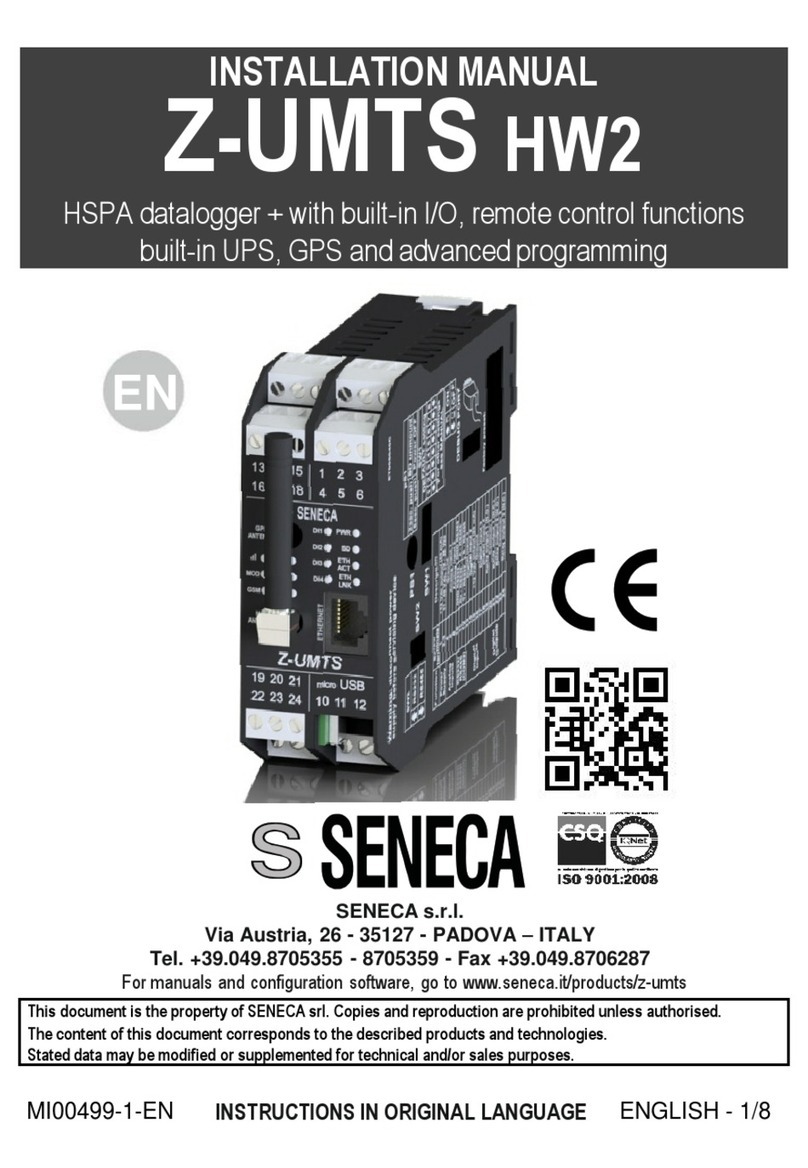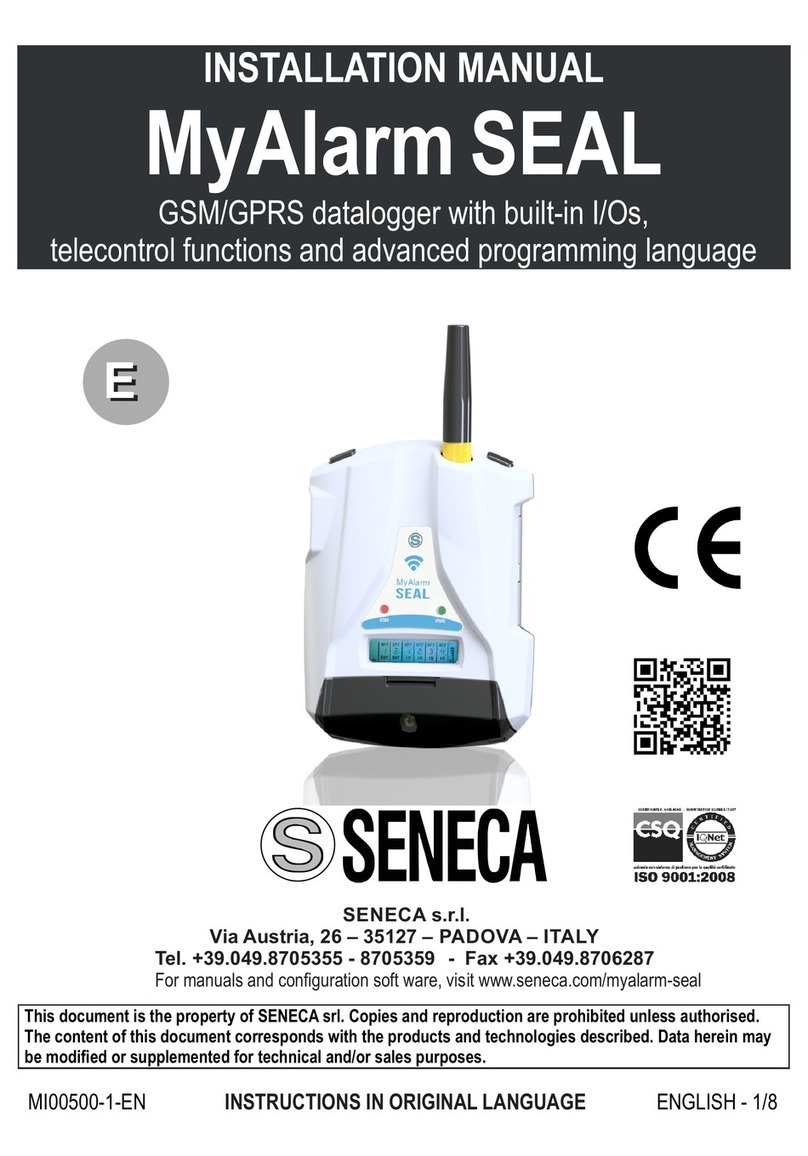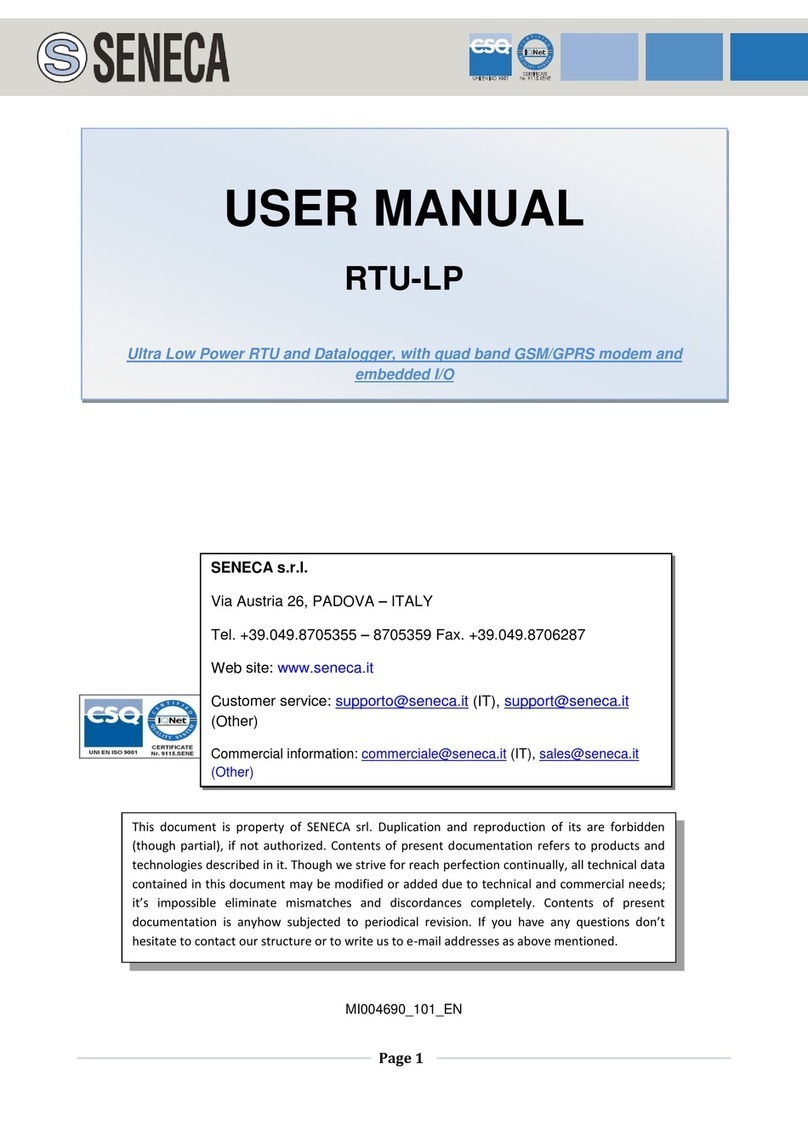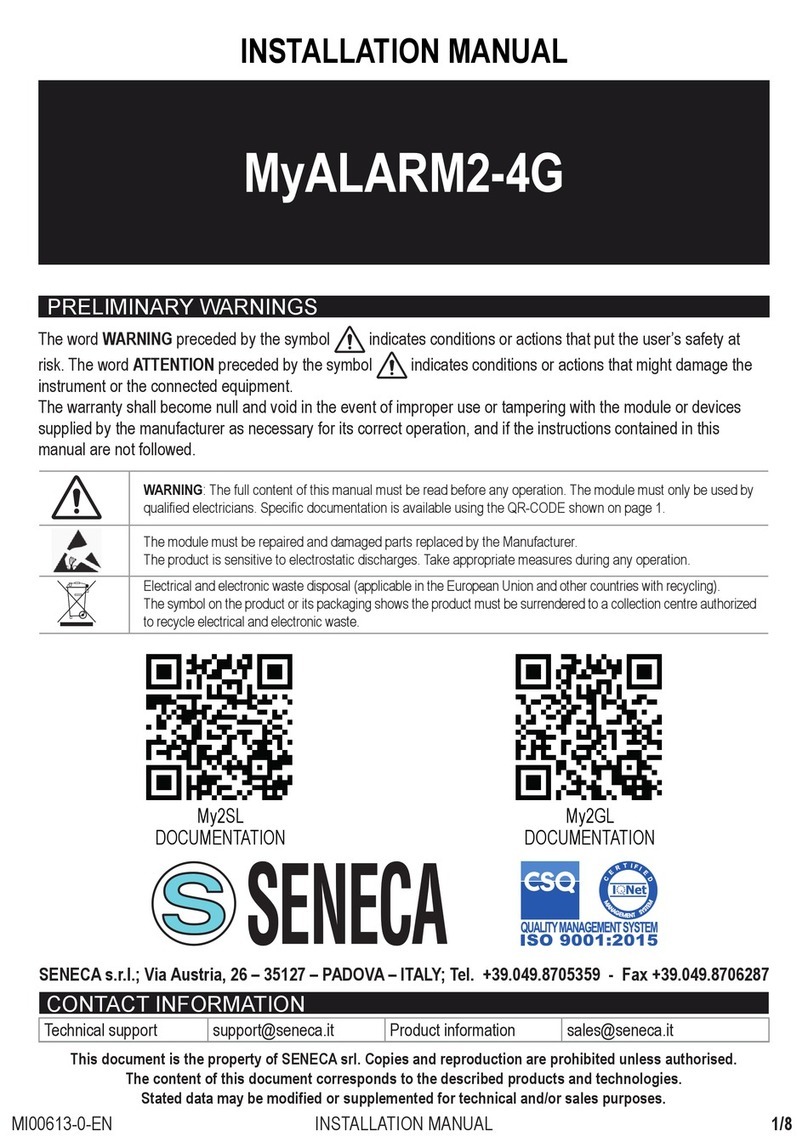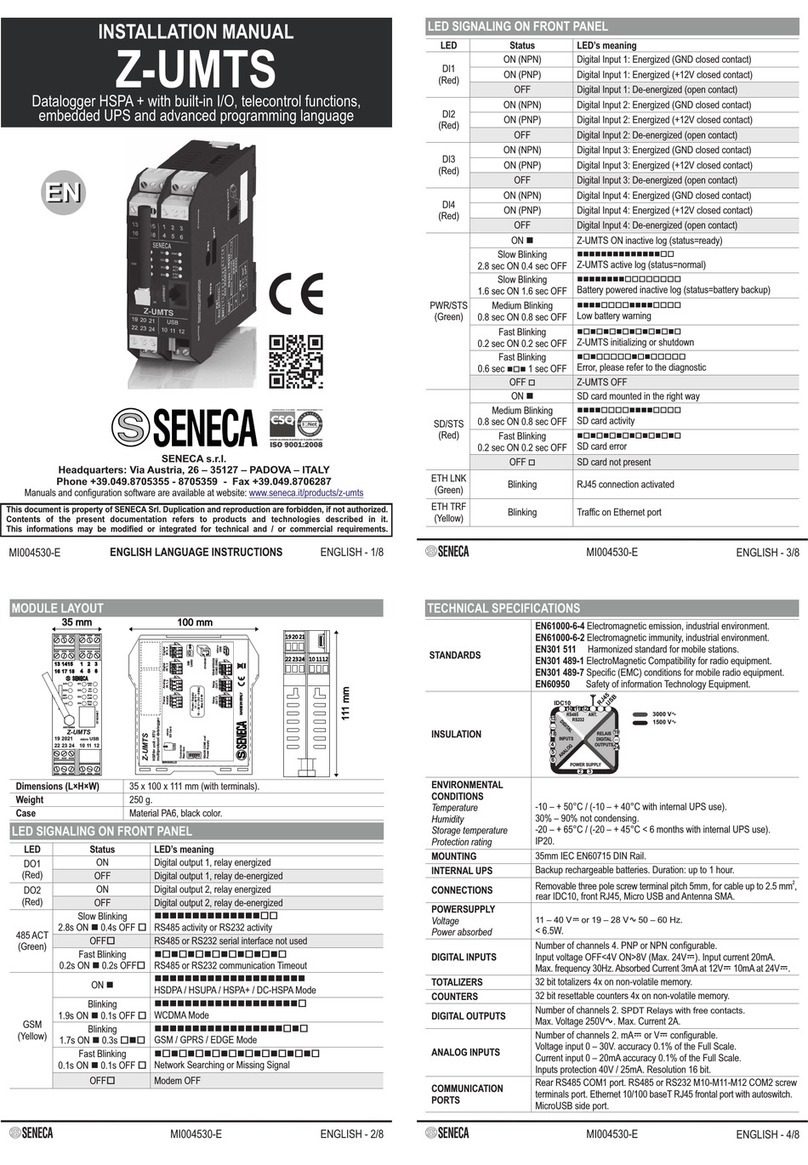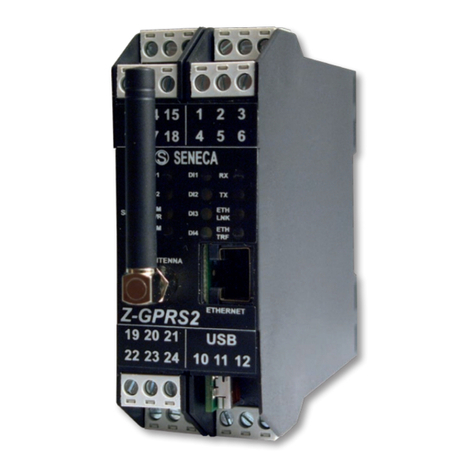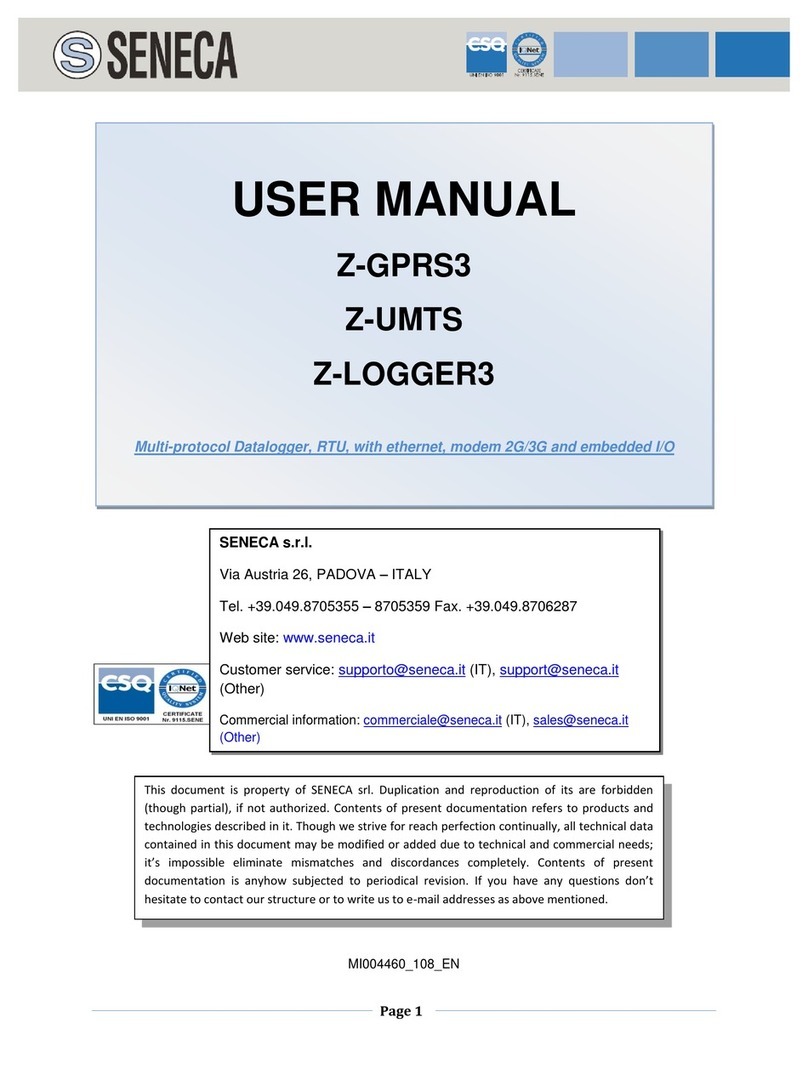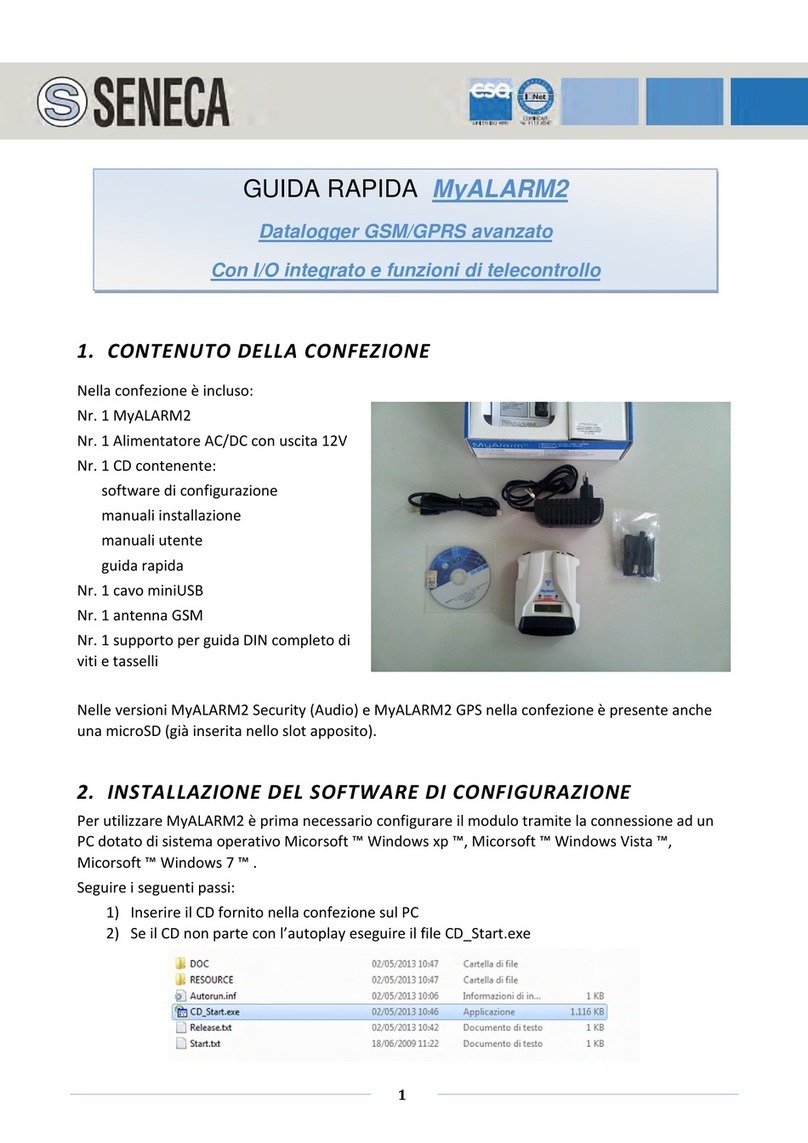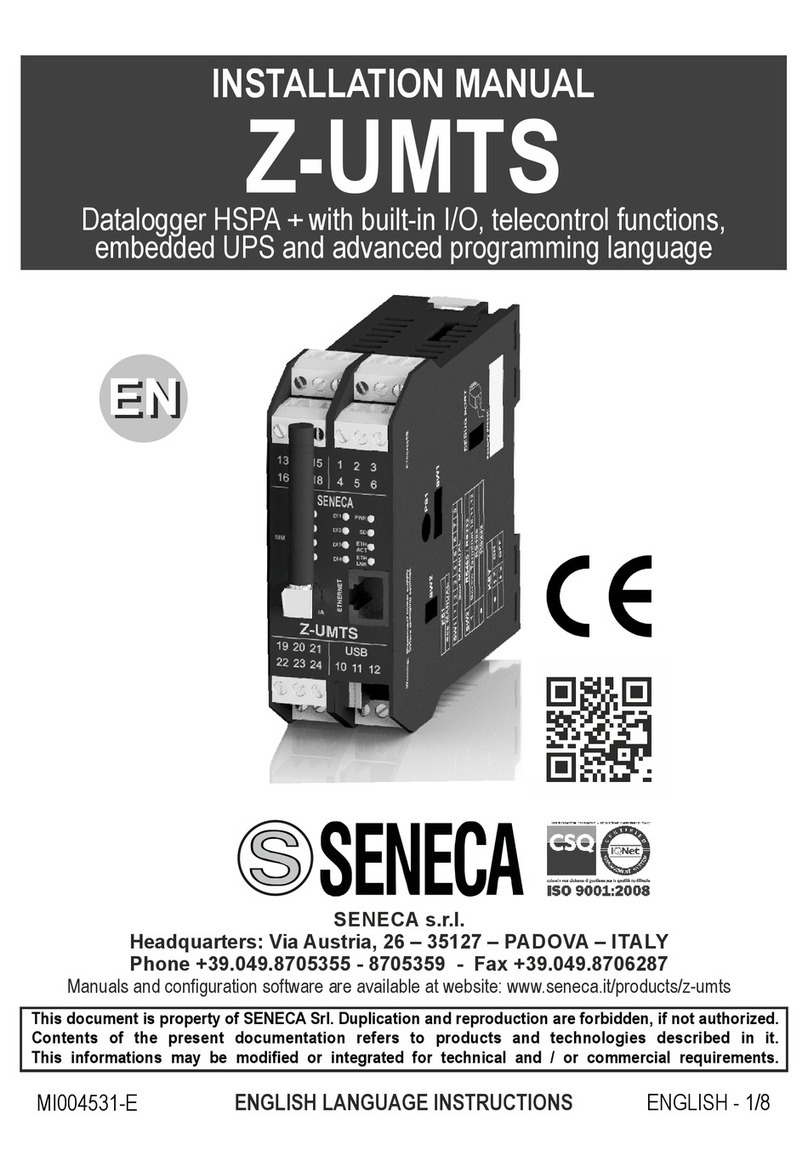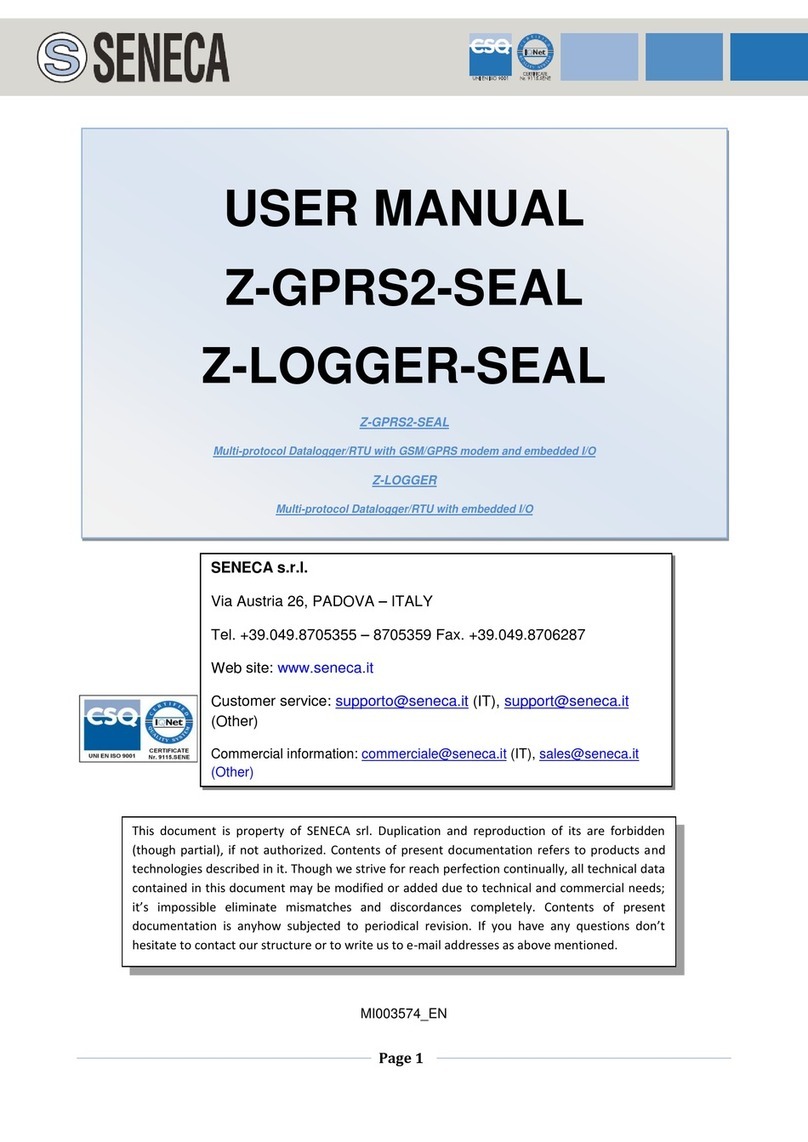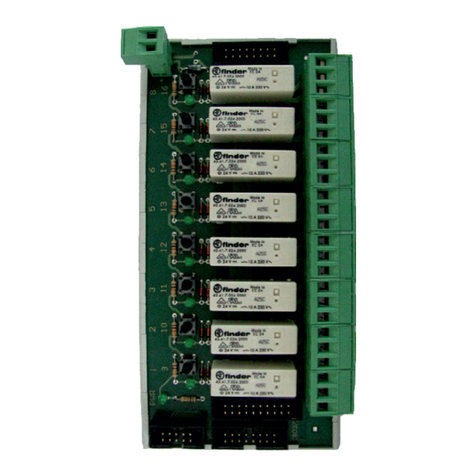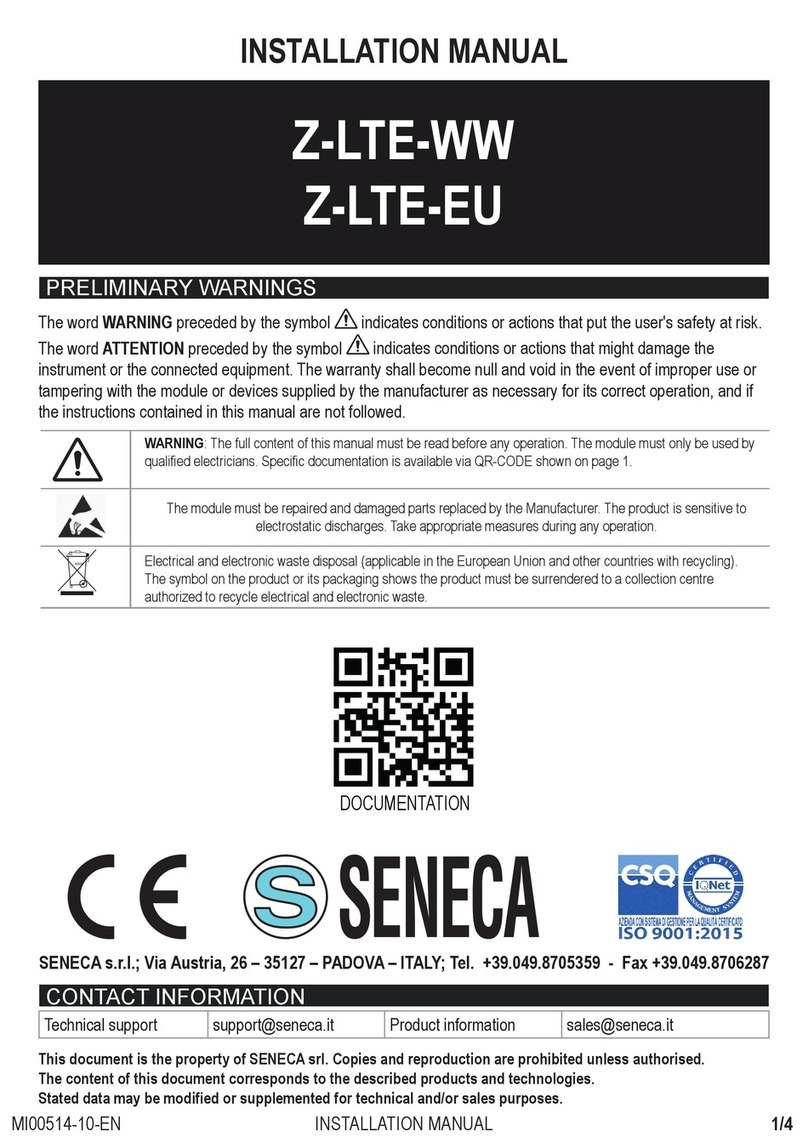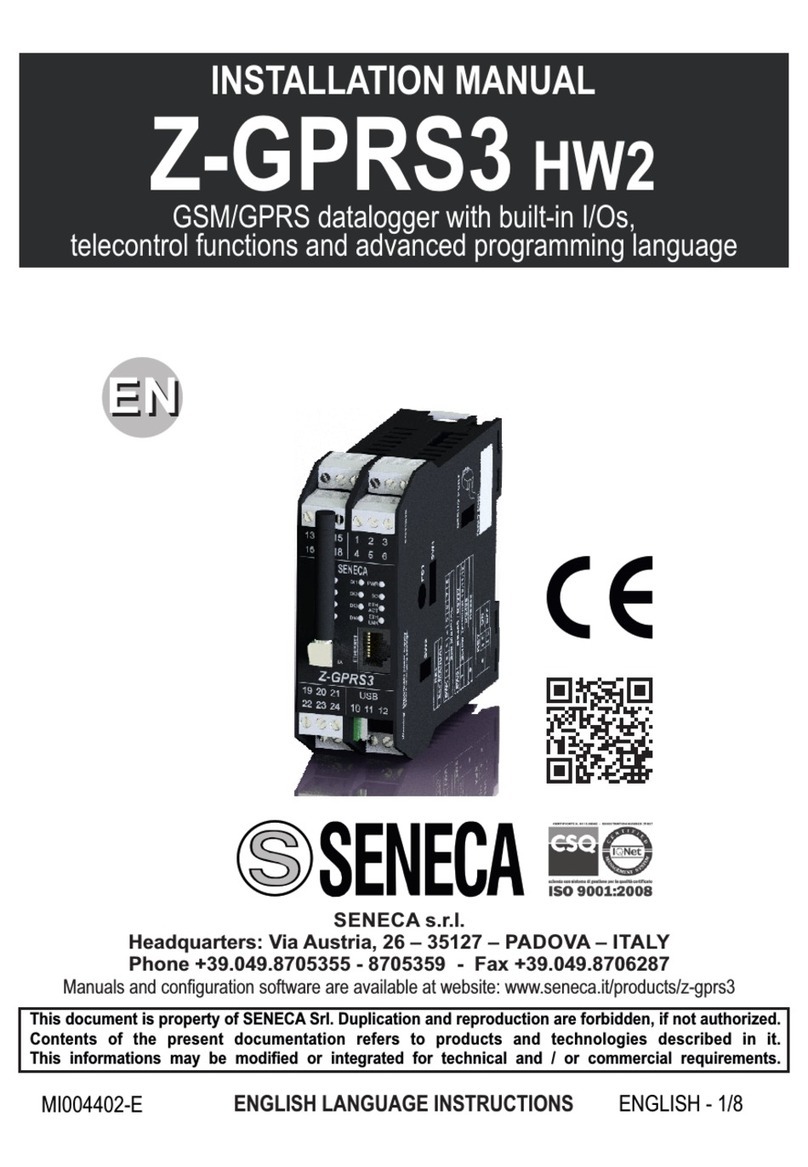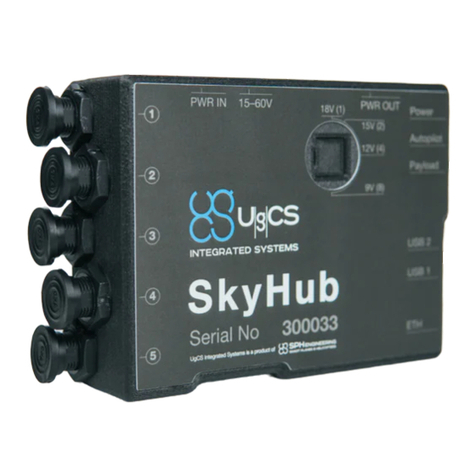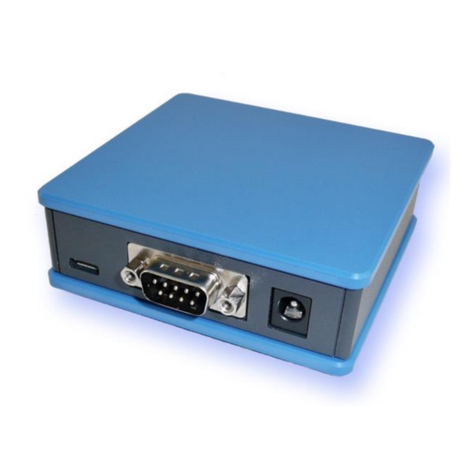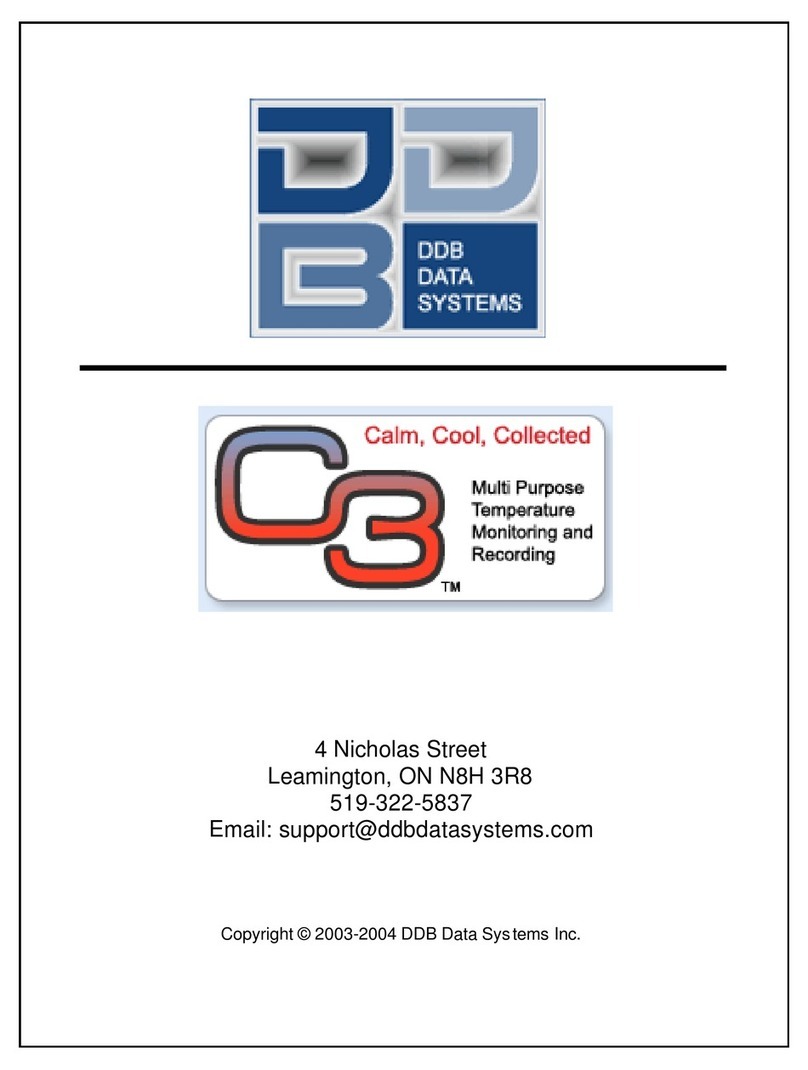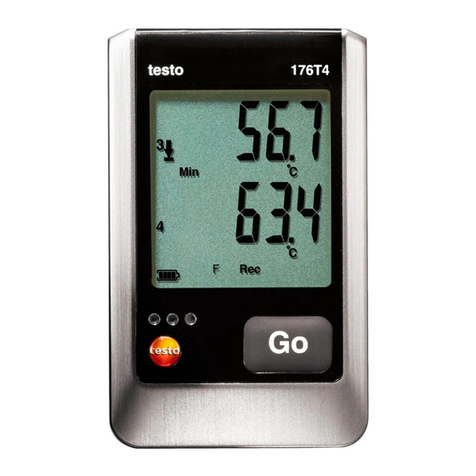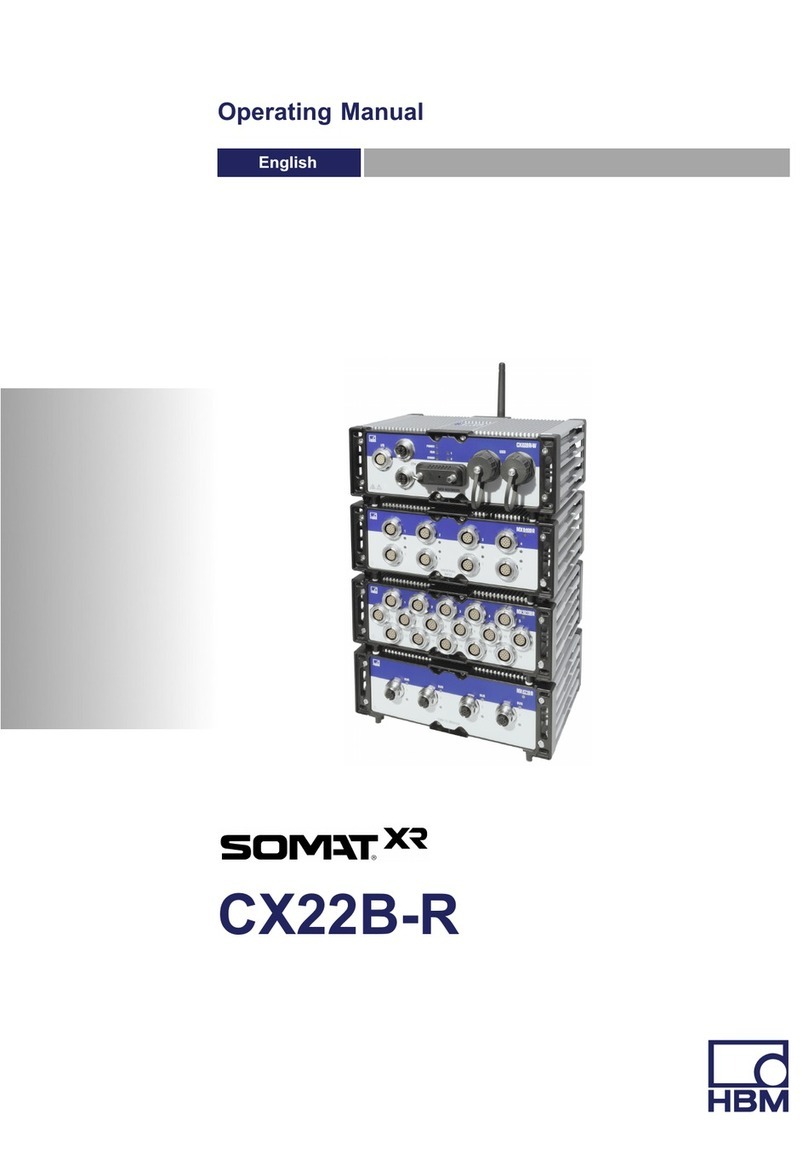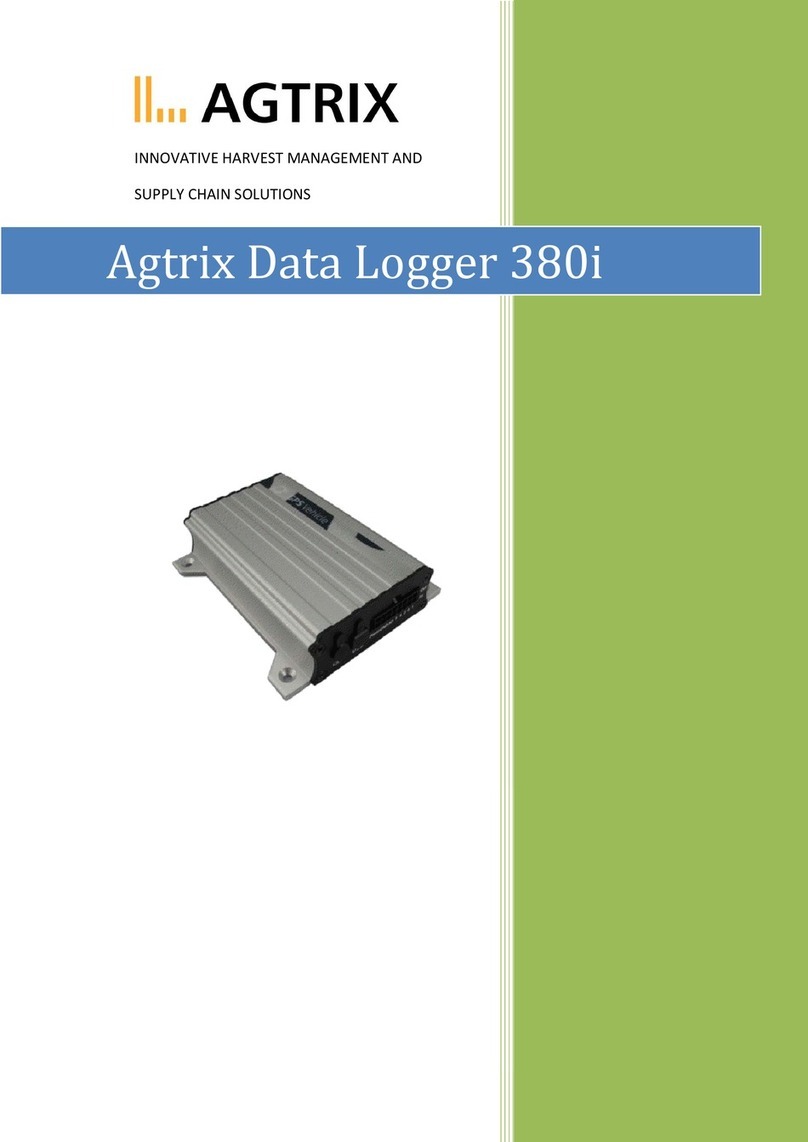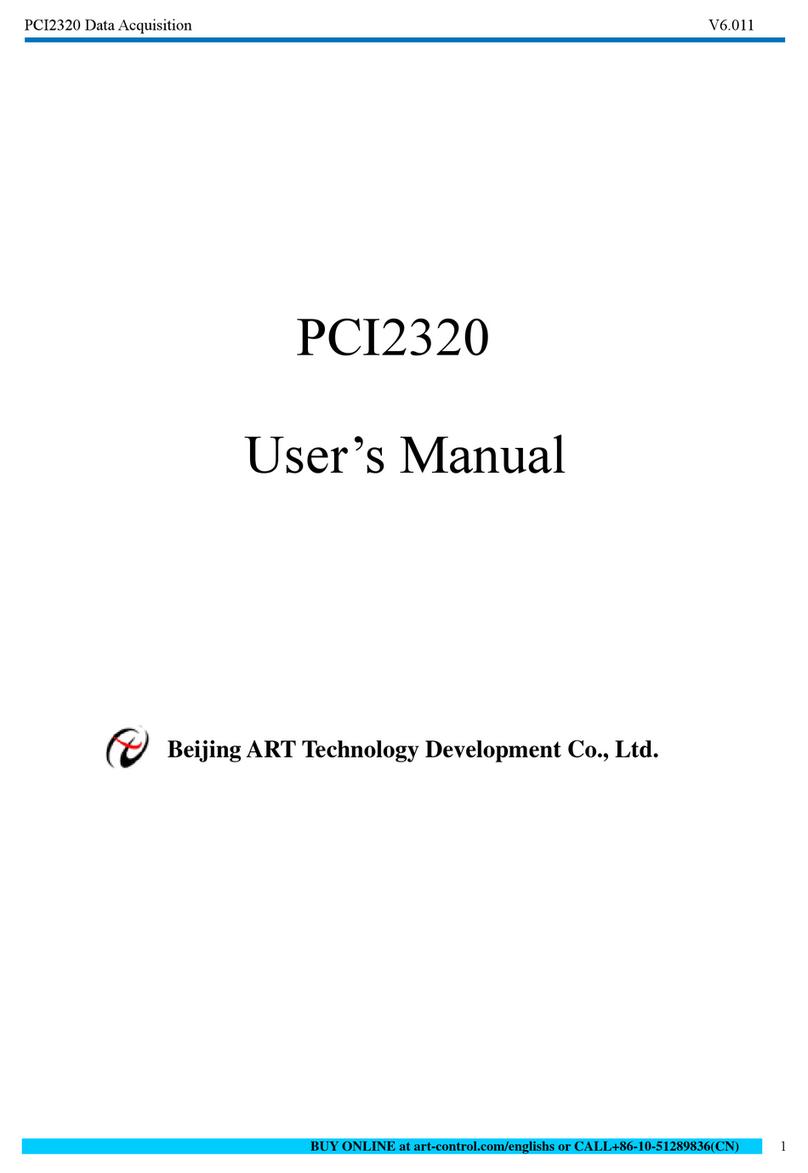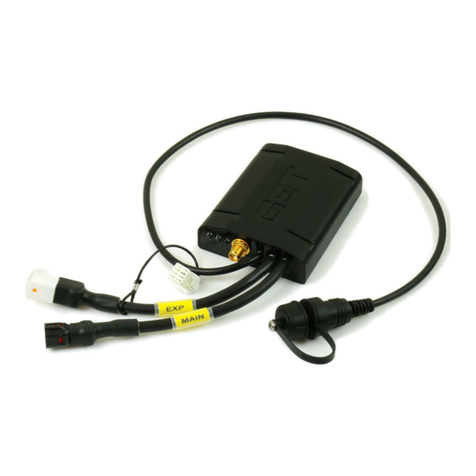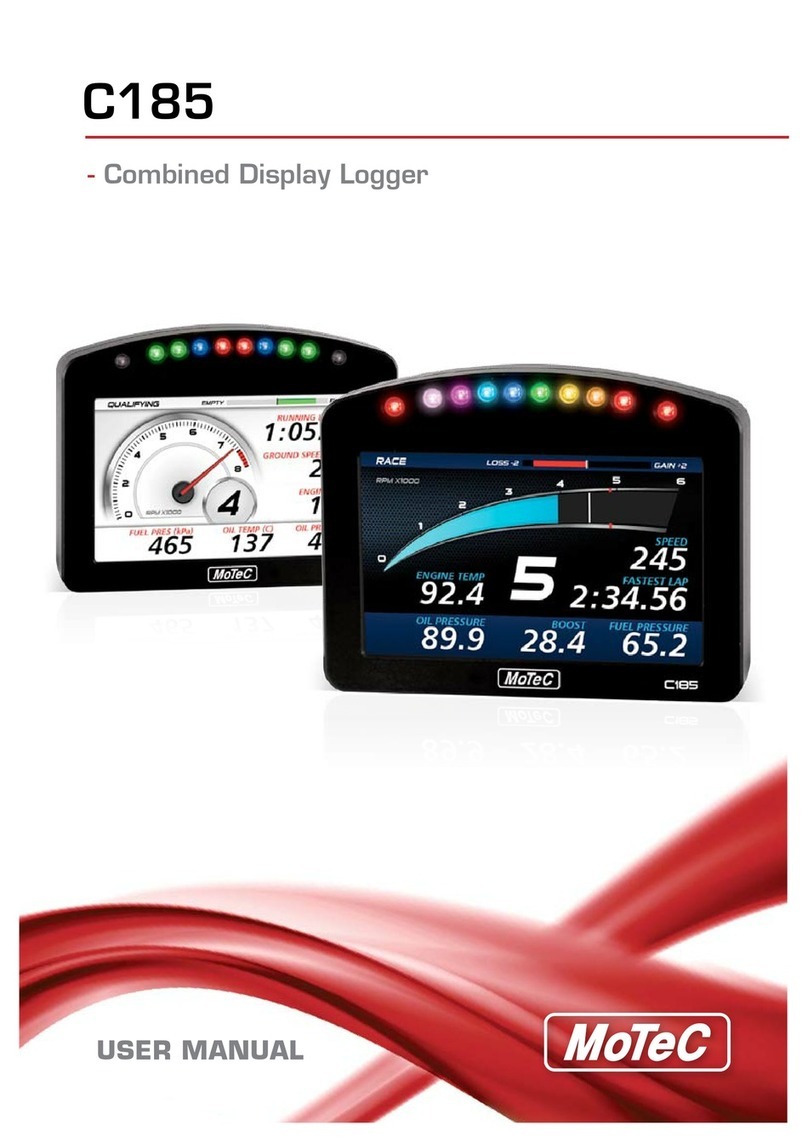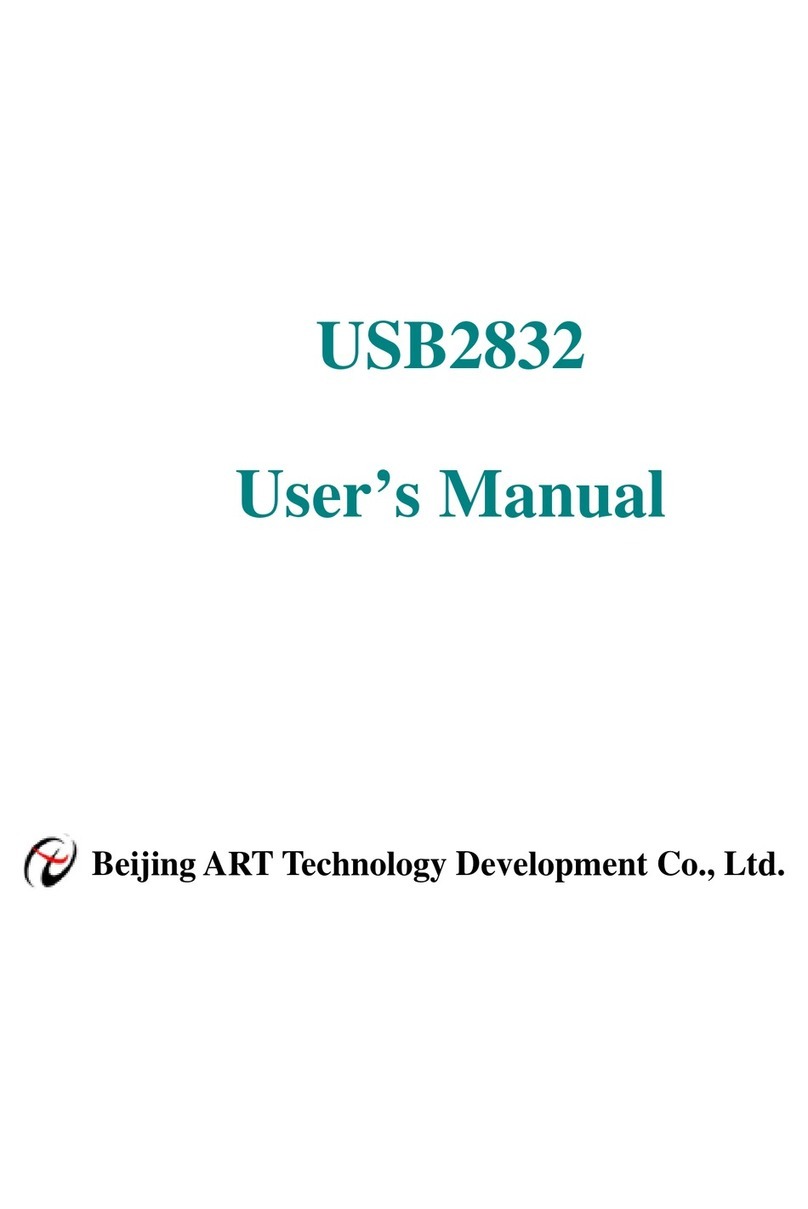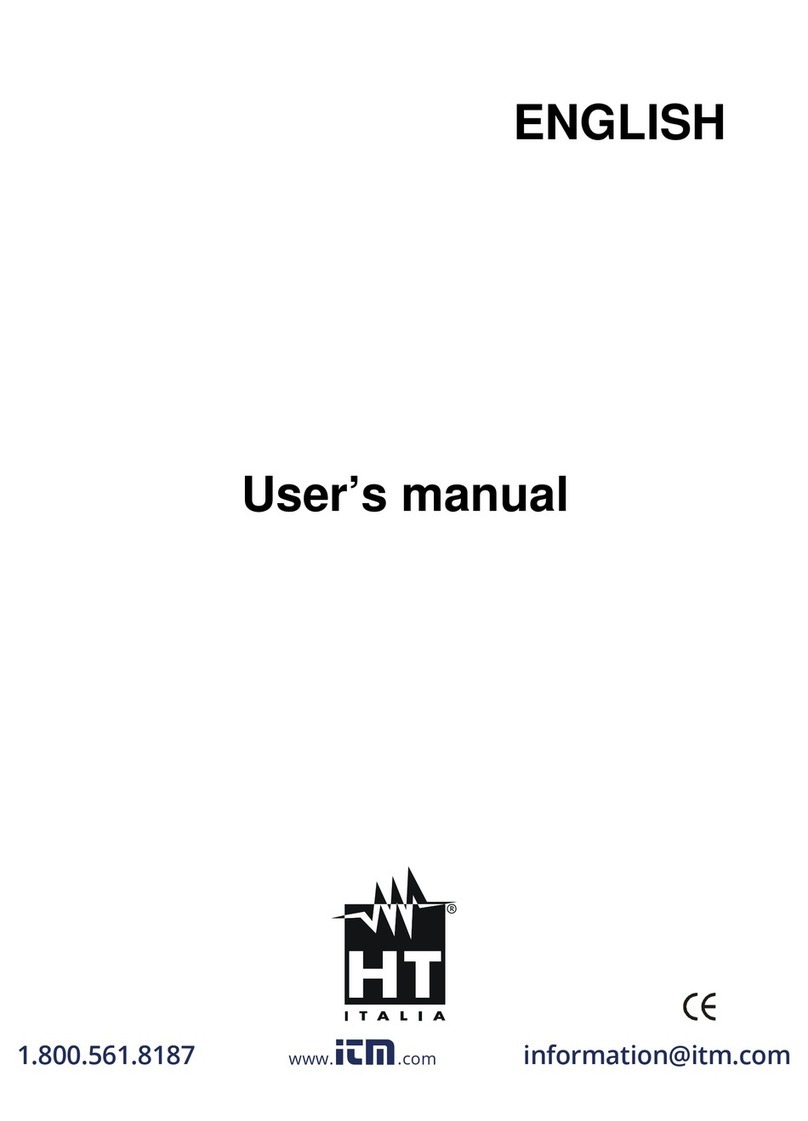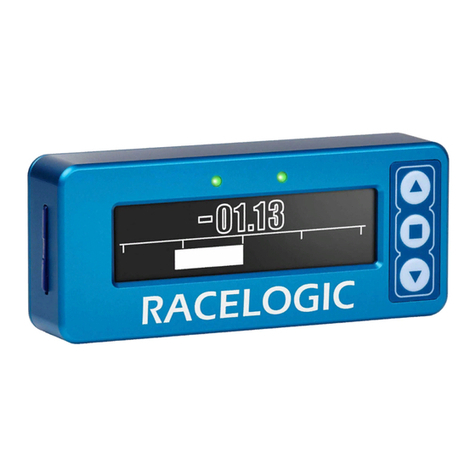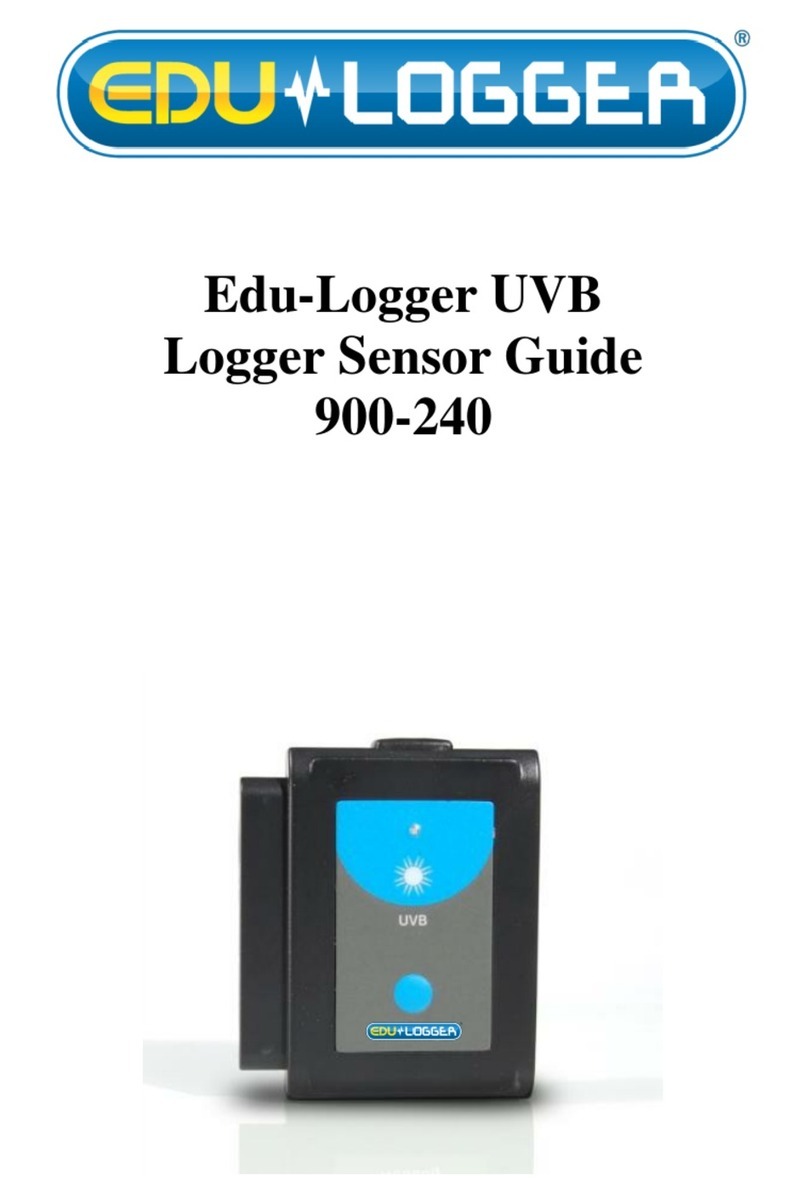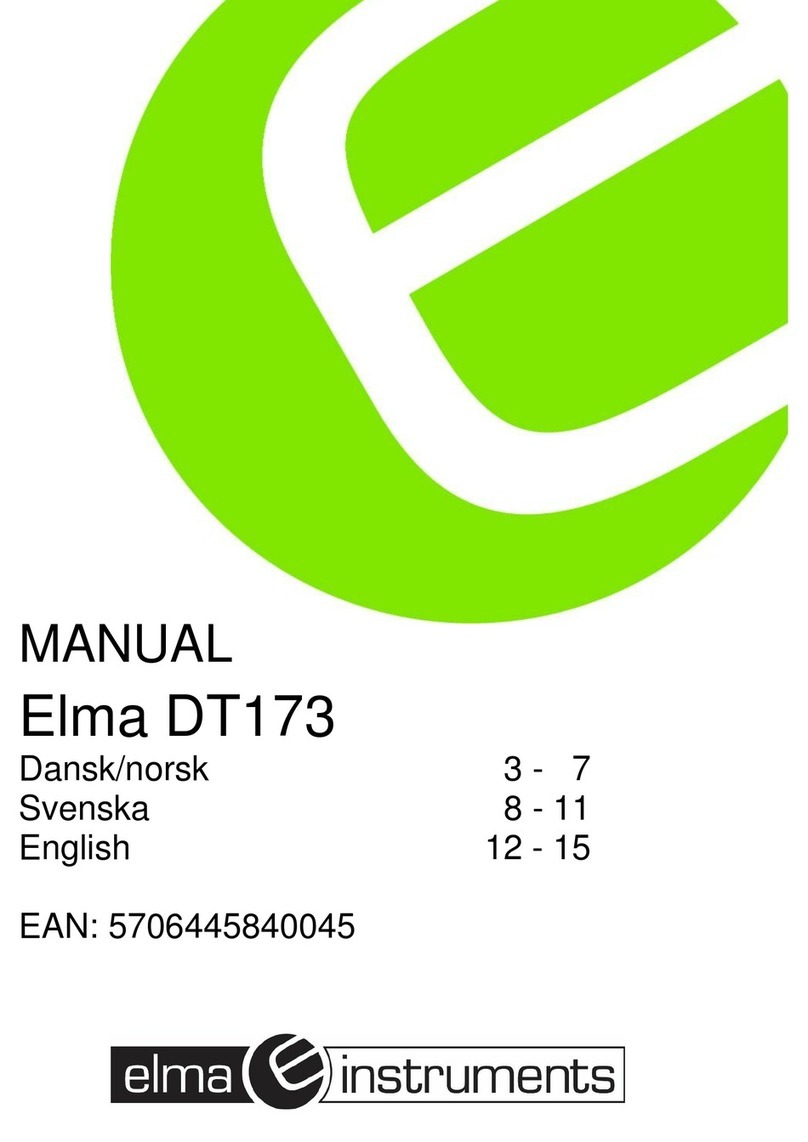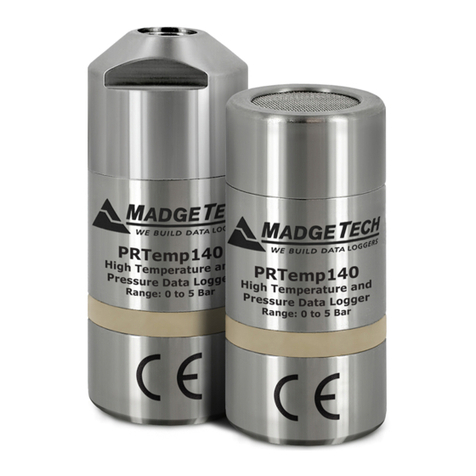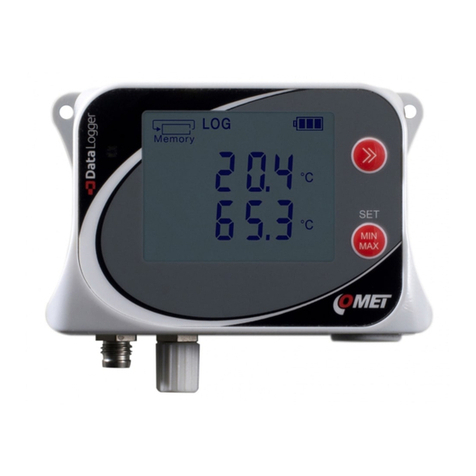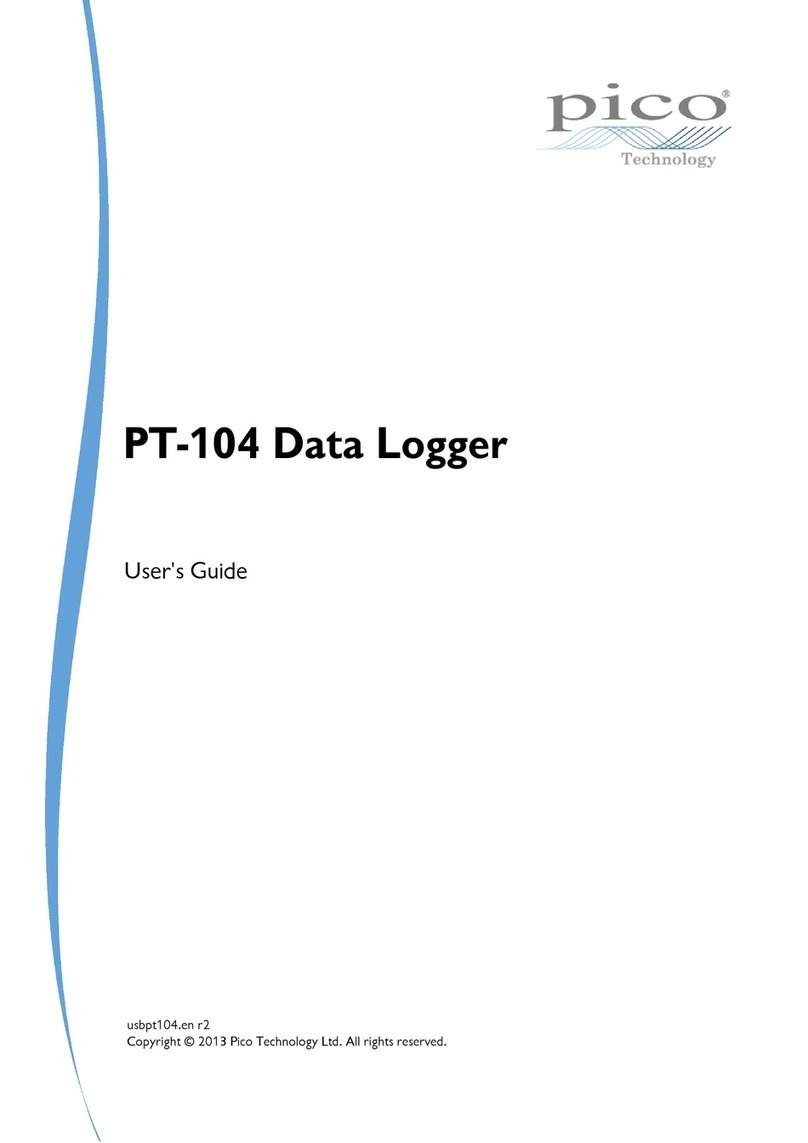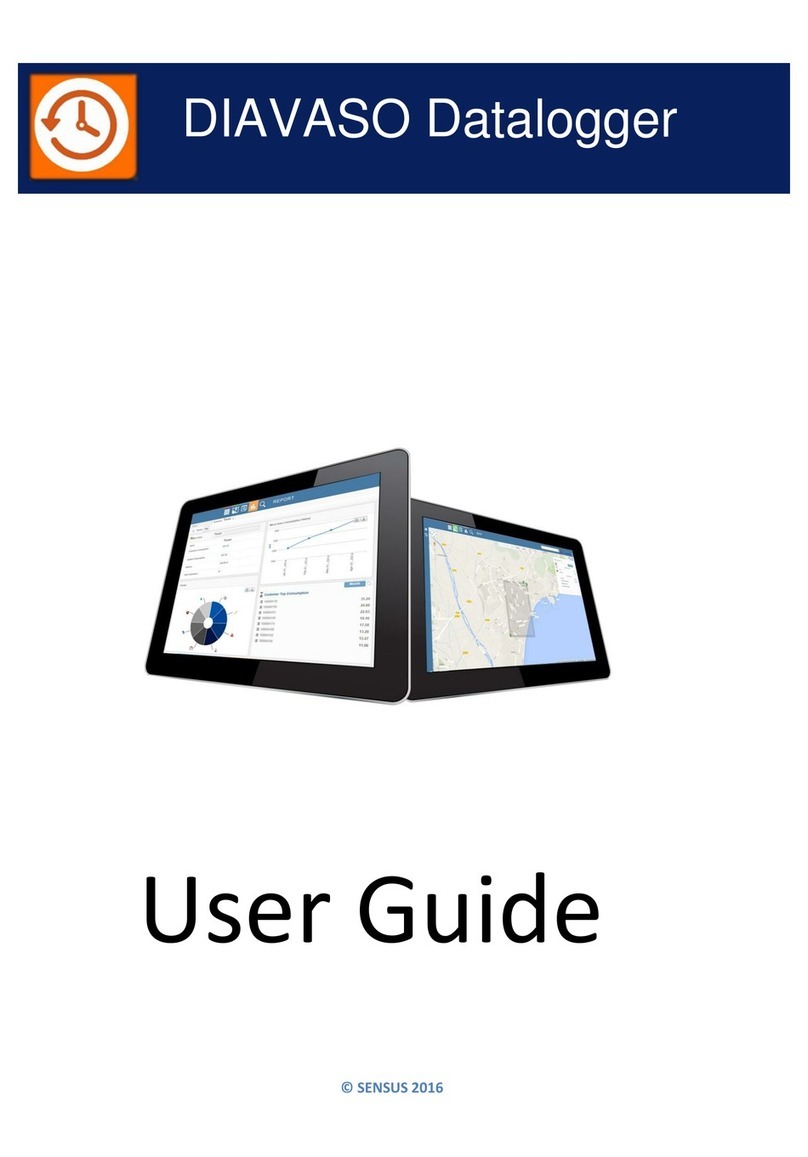1. CHARACTERISTICS
1.1. RTUModelscharacteristics
•Internal UPS for up to 1h works without external power
•MODEM: Z-Logger3: No modem
Z-GPRS3: GSM/GPRS quad-band 850/900/1800/1900 MHz
DL max: 85.6 Kbps, UL max: 42.8 Kbps
Coding scheme CS-1, CS-2, CS-3, CS-4
Class 4 (2W) at GSM 850 and EGSM 900
Class 2 (1W) at DCS 1800 and PCS 1900
GPRS multi slot class 10
Z-UMTS: HSPA+/UMTS dual-band 900/2100 MHz (standard)
HSPA+/UMTS tri-band 850/1900/2100 MHz (optional)
GSM/GPRS/EDGE quad-band 850/900/1800/1900 MHz
GPRS: UL 85.6 kbit/s; DL 85.6 kbit/s
EDGE: UL 236.8 kbit/s; DL 236.8 kbit/s
WCDMA PS: UL 384 kbit/s; DL 384 kbit/s
HSPA+: UL 5.76 Mbit/s; DL 21.6 Mbit/s
Z-UMTS HW2: Worldwide UMTS/HSDPA+ and GSM/GPRS/EDGE coverage
800/850/900/1900/2100MHz @UMTS 850/900/1800/1900MHz
@GSM
HSDPA: Max.14.4Mbps (DL)
HSUPA: Max.5.76Mbps (UL)
WCDMA: Max.384Kbps (DL)/Max.384Kbps (UL)
EDGE: Max.236.8Kbps (DL)/Max.236.8Kbps (UL)
GPRS: Max. 85.6Kbps (DL)/ Max. 85.6Kbps (UL)
Z-LTE: 4G/LTE Model (Europa, Africa, Middle Est, Korea, Thailandia,
India) Contattare Seneca per altre nazioni. GSM / GPRS/ EDGE
Dual-band: 1800 / 900 Mhz
UMTS / HSPA+, Tri-band: WCDMA 2100 / 850 / 900 Mhz
4G LTE Band 6- Band: 2100/1800/850/2600/900/800 MHz
Certificazioni: CE/GCF/Vodafone (Europa), KC/SKT/KT/LGU+
(Korea)
Z-LTE-WW: Worldwide coverage Model 4G/LTE
LTE-FDD: B1/B2/B3/B4/B5/B7/B8/B12/B13
B18/ B19/B20/B25/B26/B28 LTE-TDD: B38/B39/B40/
B41 - WCDMA: B1/B2/B4/B5/B6/B8/B19
GSM: B2/B3/B5/B
Z-LTE-WW (B3x /C3x): LTE-TDD B34/B38/B39/B40/B41
LTE-FDD: B1/B2/B3/B4/B5/B7/B8/B12/B13 B18/
B19/B20/B25/B26/B28/B66
UMTS/HSPA+ B1/B2/B4/B5/B6/B8/B19
GSM/GPRS/EDGE 850/900/1800/1900MHz
